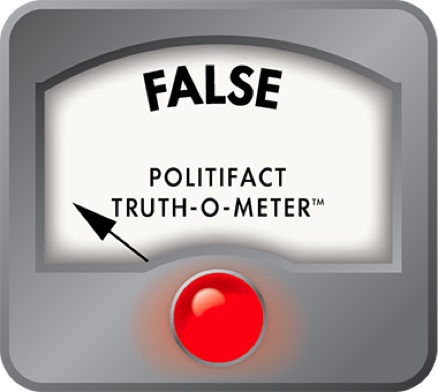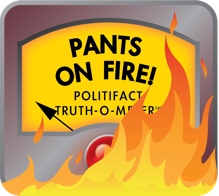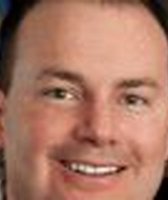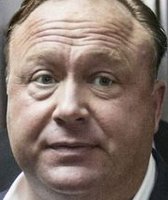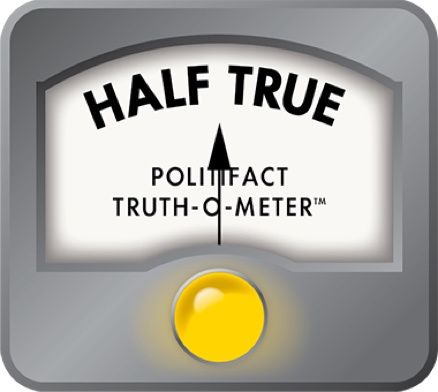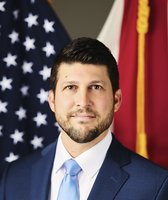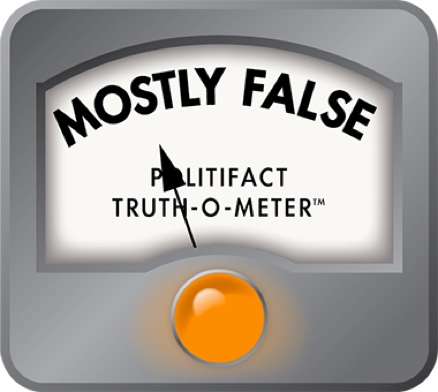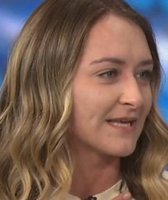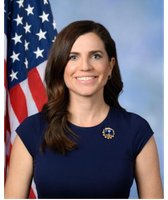Stand up for the facts!
Our only agenda is to publish the truth so you can be an informed participant in democracy.
We need your help.
I would like to contribute

Health and Human Services Secretary Robert F. Kennedy Jr. speaks during a news conference on the CDC's autism report at the Hubert Humphrey Building Auditorium in Washington, April 16, 2025. (AP)
If Your Time is short
-
Autism experts say the neurological conditon’s definition and diagnosis have changed over the years, and autism awareness and access to screening have improved, all contributing to autism’s rising prevalence.
-
Autism has no identified single cause. Scientists have found links between autism and hundreds of genes.
-
Researchers said although some other factors have been causally linked to a higher prevalence of autism, there is no single factor such as environmental toxins that can explain all autism diagnoses.
Health and Human Services Secretary Robert F. Kennedy Jr. insists an environmental toxin is responsible for increased autism prevalence in the U.S.
"This is a preventable disease," he said April 16, dismissing an HHS agency report’s explanation for the increase. "We know it’s an environmental exposure. It has to be. Genes do not cause epidemics. They can provide a vulnerability, but you need an environmental toxin."
His remarks followed a Centers for Disease Control and Prevention report on autism’s prevalence among children that found 1 in 31 8-year-olds have autism, up from 1 in 36 two years before. The CDC linked the rise to better screening and awareness, contradicting Kennedy.
The medical name for autism is autism spectrum disorder, often shortened to ASD; it refers to a neurological condition that influences how a person behaves, interacts with others and communicates.
Autism researchers and people on the autism spectrum told PolitiFact more people have been diagnosed with autism as its definition and diagnostic criteria expanded over time. They also attributed autism’s rising prevalence to increased awareness and screening.
Autism has no identified single cause. Experts told us research does not support Kennedy’s assertion that an "environmental toxin" is increasing autism’s prevalence. Autism research has proven genetic components are linked to a higher likelihood of autism, they said. Other factors linked to a higher likelihood include higher paternal age and maternal use of a drug called valproate, which is used to treat epilepsy and bipolar disorder.
"Autism is not an epidemic, nor is it a disease, and nor is it preventable," said M. Remi Yergeau, a Carleton University professor and Canada Research Chair in Critical Disability Studies and Communication. Discussing autism in such terms is scientifically inaccurate and can dehumanize autistic people and instill fear, Yergeau said.
Evidence does not support idea that an "environmental toxin" is causing autism
Joshua Anbar, an Arizona State University healthcare administration and policy professor and one of the CDC report’s researchers, said numerous studies examined various environmental factors such as prenatal exposures to infections or antibiotics potentially linked to autism.
"To my knowledge, none of these factors have been conclusively proven to explain the increase in autism prevalence we have observed over the last several decades," he said.
Zoe Gross, director of advocacy at the Autistic Self Advocacy Network, said some initial studies have suggested an association between autism and environmental factors such as pollution, but she was unaware of studies "demonstrating a causal link between the two."
Gross also said "a robust body of research" proves there is no link between vaccines and autism, which she believes was the "environmental toxin" Kennedy speculated about. Over decades as an anti-vaccine advocate, Kennedy championed the false narrative that vaccines cause autism.
Kennedy has also pledged to deliver "answers" about autism’s rise by September. Experts told PolitiFact it would be impossible to produce such answers in that timeframe.
Eric Fombonne, an Oregon Health & Science University professor emeritus of psychiatry, said he doesn’t know how researchers would begin to investigate the "environmental toxins" Kennedy mentioned, because doing so requires observing a cluster of cases appearing in a population in a certain time period or within a geographic location.
"In any country I know, there is no evidence of a clustering of (autism) cases in time or by geographical area," Fombonne said. "The lack of such evidence is another sort of piece of the puzzle which doesn’t really support the environmental risk hypothesis."
Latest CDC report attributed increased prevalence to better screening
The CDC based its 1-in-31 finding on 2022 autism surveillance program data from 16 sites across 15 states and territories. The figure is not a nationally representative autism prevalence estimate, the report said.
Prevalence varied widely by location, with a site in Laredo, Texas, reporting 9.7 cases per 1,000 8-year-olds and a California site reporting 53.1 cases per 1,000 8-year-olds, the report said.
The report’s 52 authors attributed the changes in autism prevalence over time and across sites to the "differing practices" for evaluation and identification, varying screening availability and challenges such as financial barriers that can limit access to services.
Since 2018, for example, California has reported the program’s highest prevalence rates among 4- and 8-year-olds. That’s partly because a local initiative trained hundreds of pediatricians to screen and refer children for assessments as early as possible, the researchers wrote.
"Research has not demonstrated that living in certain communities puts children at greater risk for developing ASD," they wrote.
Diagnostic requirements changed, and awareness, acceptance increased
In 1994, the American Psychiatric Association’s guide to diagnosing mental disorders first categorized autism as a spectrum, and included subcategories such as childhood disintegrative disorder and Asperger’s syndrome.
That change "significantly expanded who could be diagnosed," folding in people with milder symptoms and stronger language skills, said Christopher Banks, president and CEO of the Autism Society of America. "As a result, diagnosis rates rose sharply in the late 1990s and early 2000s."
In 2013, the subcategories were consolidated into a single autism spectrum disorder diagnosis that includes people with both minimal and significant support needs. What was once considered Asperger’s, for example, is now autism spectrum disorder Level 1.
Other factors have boosted the diagnosis rate. Advocates’ efforts to destigmatize autism have improved awareness, Fombonne said.
Beginning in the 1990s, more services became available to autistic children, including special education and treatments covered by insurance. Access to services means, "there’s just a lot more value to the diagnosis," said David Mandell, a University of Pennsylvania psychiatry professor and director of the Penn Center for Mental Health. More services, in turn, led to greater parental awareness, and likely to more testing.
Mandell said studies show preterm babies are at a higher risk for autism. That means rising survival rates for premature babies may contribute to higher numbers.
Daniel Openden, president and CEO of the Southwest Autism Research & Resource Center, said CDC data has shown stable growth in autism diagnoses in recent years: 1 in 44 in 2018; 1 in 36 in 2020; and 1 in 31 in 2022.
"These smaller incremental changes, as opposed to sharp spikes in increases, suggest the effect of the diagnostic changes is leveling off and we’re approaching a more accurate and consistent understanding of autism prevalence in the general population," Openden said.
Autism’s cause remains unknown; genetics plays a role but other factors less concrete
Scientists have found links between autism and hundreds of genes, Openden said.
Beyond genetics, researchers have explored a number of potential causes, but few conclusive links have been discovered.
Fombonne said parental age has been causally associated with higher prevalence of autism: "The older the parents — and the father in particular — the more likely the risk of autism is." He called it a "very robust conclusion" documented in dozens of studies.
But this factor’s effect on overall autism rates is very small, because few children are born to fathers over age 50, Fombonne said.
Studies have also linked autism to maternal use of valproate, a drug more widely known by the brand name Depakote. Fombonne said pregnant mothers who take this medication have a small increased risk of having an autistic child. He added that use of the medication by pregnant mothers is very rare, so it doesn’t account for many cases of autism.
PolitiFact Chief Correspondent Louis Jacobson and Researcher Caryn Baird contributed to this report.
RELATED: RFK Jr. exaggerates share of autistic population with severe limitations
RELATED: Ask PolitiFact: If Robert F. Kennedy Jr. is confirmed as HHS secretary, could he ban vaccines?
RELATED: Robert F. Kennedy Jr.’s campaign of conspiracy theories: PolitiFact’s 2023 Lie of the Year
Our Sources
PBS News’ YouTube channel, WATCH LIVE: RFK Jr. holds news briefing for CDC findings on the increase of autism prevalence, April 16, 2025
U.S. Centers for Disease Control and Prevention, Prevalence and Early Identification of Autism Spectrum Disorder Among Children Aged 4 and 8 Years — Autism and Developmental Disabilities Monitoring Network, 16 Sites, United States, 2022, April 17, 2025
U.S. Centers for Disease Control and Prevention, Prevalence and Characteristics of Autism Spectrum Disorder Among Children Aged 8 Years — Autism and Developmental Disabilities Monitoring Network, 11 Sites, United States, 2020, March 24, 2023
U.S. Centers for Disease Control and Prevention, Early Identification of Autism Spectrum Disorder Among Children Aged 4 Years — Autism and Developmental Disabilities Monitoring Network, 11 Sites, United States, 2020, March 24, 2023
U.S. Centers for Disease Control and Prevention, Prevalence and Characteristics of Autism Spectrum Disorder Among Children Aged 8 Years — Autism and Developmental Disabilities Monitoring Network, 11 Sites, United States, 2018, Dec. 3, 2021
Interview with Dr. Eric Fombonne, professor emeritus of psychiatry at Oregon Health & Science University, April 18, 2025
Email interview with Zoe Gross, director of advocacy at the Autistic Self Advocacy Network, April 18, 2025
Email interview with Joshua Anbar, healthcare administration and policy professor at Arizona State University, April 17, 2025
Email interview with Daniel Openden, president and CEO of the Southwest Autism Research & Resource Center, April 21, 2025
Email interview with M. Remi Yergeau, Canada Research Chair in Critical Disability Studies and Communication and associate professor of Communication and Media Studies at Carleton University, April 21, 2025
Emailed statement from the Southwest Autism Research & Resource Center, April 18, 2025
Email interview with John J. Pitney, Jr., a Claremont McKenna College politics professor, April 17, 2025
Email interview with Christopher Banks, president and CEO of the Autism Society of America, April 17, 2025
Email interview with David Mandell, a University of Pennsylvania psychiatry professor and director of the Penn Center for Mental Health, April 17, 2025
The Washington Post, Autism rate rose, CDC says in report that contradicts RFK Jr. on the reason, April 15, 2025
Cleveland Clinic, Autism, accessed April 17, 2025
STAT, There’s no autism epidemic. But there is an autism diagnosis epidemic, Feb. 10, 2022
DSM-5-TR, Autism Spectrum Disorder (ASD) in the DSM-5-TR, accessed April 18, 2025
PBS News’ YouTube channel, WATCH LIVE: RFK Jr. holds news briefing for CDC findings on the increase of autism prevalence, April 18, 2025
CNN, US autism rate continues to rise, CDC says, pointing to greater awareness and better screening, April 15, 2025
The Transmitter, Q&A with Eric Fombonne: Are autism’s rising rates real? May 15, 2012
STAT, There is no epidemic of autism. It’s an epidemic of need, March 23, 2023
Mayo Clinic, Autism Spectrum Disorder, accessed April 21, 2025
ScienceDirect, Diagnostic Substitution, accessed April 21, 2025
Scientific American, RFK, Jr., Is Wrong about Cause of Rising Autism Rates, Scientists Say, April 17, 2025
CBS News, Musk, RFK Jr. and others speak at Trump Cabinet meeting, April 10, 2025
The Transmitter, The link between parental age and autism, explained, Jan. 28, 2020
Johns Hopkins Medicine, Changes in Father’s Sperm Linked to Autistic Traits in Their Children, Small Preliminary Study Suggests, April 27, 2023
CBS News, Older Dads Have More Autistic Kids, Sept. 6, 2006
Journal of the American Medical Association, Prenatal Valproate Exposure and Risk of Autism Spectrum Disorders and Childhood Autism, July 23, 2015
The New England Journal of Medicine, Risk of Autism after Prenatal Topiramate, Valproate, or Lamotrigine Exposure, March 20, 2024
Harvard T.H. Chan School of Public Health, Air pollution linked with increased risk of autism in children, May 10, 2021
U.S. Department of Health and Human Services, Grants, accessed April 22, 2025
Children’s Hospital of Philadelphia, Autism and Prematurity: What We Know, March 19, 2024
The Transmitter, The evolution of ‘autism’ as a diagnosis, explained, May 9, 2018
ABC News, RFK Jr. has a goal to study what's 'behind' autism by September. How realistic is it? April 17, 2025
National Institutes of Health, Autism Spectrum Disorder, accessed April 21, 2025
National Institutes of Health, The Association Between Parental Age and Autism-Related Outcomes in Children at High Familial Risk for Autism, Aug. 2, 2020
Healthline, Understanding Why the Term ‘Asperger’s’ Is No Longer Used, Dec. 4, 2023
Paul Menton Centre, Level 1 Autism Spectrum Disorder (formerly known as Asperger’s Syndrome), accessed April 23, 2025
The Transmitter, How the loss of Asperger syndrome has lasting repercussions, May 19, 2020
BMC Medicine, Prenatal environmental risk factors for autism spectrum disorder and their potential mechanisms, Sept. 16, 2024
Journal of the American Medical Association, Effects of Autism Spectrum Disorder Insurance Mandates on the Treated Prevalence of Autism Spectrum Disorder, September 2016
National Institutes of Health, Survival rate increases for extremely preterm infants in NIH-funded research network, Jan. 18, 2022
Stanford Medicine Scope Beyond the Headlines, Premature babies’ survival rate is climbing, study says, Feb. 8, 2022




